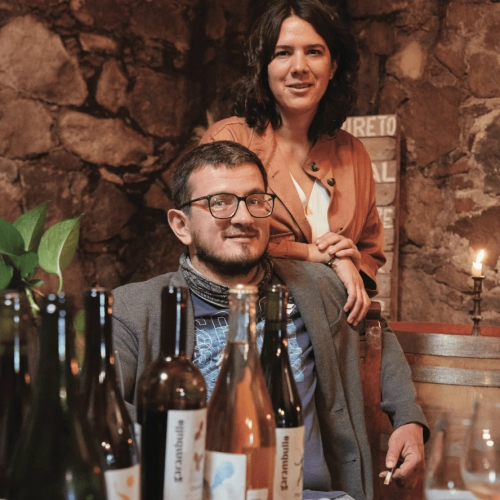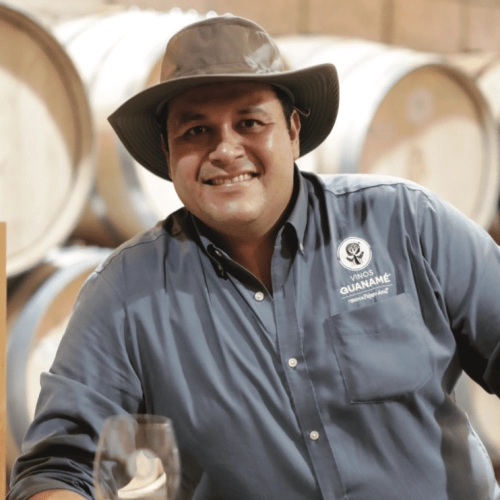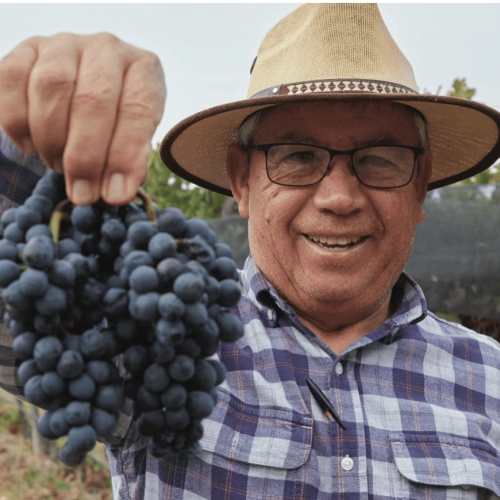A N T E C E D E N T E S D E L V I N O G U A N A J U A T E N S E

The state of Guanajuato, in Mexico, has a rich winemaking history that dates back five centuries, when the first vines were introduced. However, it was in recent decades that viticulture began to develop more significantly in the region. The incorporation of vine cultivation has inspired a new agricultural vocation in the cities and magical towns of Guanajuato, providing an opportunity to nurture from another angle the link with these lands.
The climate in Guanajuato offers favorable conditions for growing grapes, thanks to the basins and rivers of the region, which allows each region to have a unique personality in its wines. The production of wines worthy of local gastronomic creativity is already a responsibility, a goal and an inspiration for some producers, and is part of a symbiosis that is beginning to have discourse.
A bit of history
C o m o t o d o c o m e n z ó



THE PROTAGONISTS
C O N O C E A L A G E N T E D E T R Á S D E L O S V I N O S D E G U A N A J U A T O

Natalia Lopez and Branko Pjanic
winemakers of Bodega Garambullo.

Juan Manchón
cavas manchón

Elias Torres
Pájaro Azul Winery.

Tiburcio Hernandez
agronomist at Cuna de Tierra
H i s t o r i a y e s t a b l e c i m i e n t o d e l a c u l t u r a v i t i v i n í c o l a e n e l e s t a d o d e G u a n a j u a t o .

1521
Fall of Tenochtitlan
1524
Law of Charles V
Royal edict obliging encomenderos to plant 1,000 vines for every 100 Indians granted.


1548
Discovery of silver deposits
in San Bernabé and Rayas, which has led to population growth in the locality.
1550
From the 16th century
Guanajuato was integrated into the Camino Real de Tierra Adentro, the most extensive trade route in the world at the time. It covered 2,580 km


1595
Royal Edict of Philip II
It prohibits the planting of new vineyards, except when it involves the production of wines for the Eucharist and other exceptions.
1793
Viticulture instruction in Guanajuato
Father Miguel Hidalgo teaches viticulture to parishioners in San Felipe


1803
Miguel Hidalgo
moves to the town of Dolores.

1810
Independence
Burning of Hidalgo's vineyards by the colonial army. Beginning of the Independence movement.


1870
The first winery
in San Luis de la Paz.


1900
The Porfiriato
During Porfirio Diaz's term of office (1876-1911), one million grapevines were planted at the Hacienda de Roque in Guanajuato.


1913
Gamba & Sons
Bodega San Luis Rey becomes Gamba e Hijos with the incorporation of Rafael Gamba, an immigrant from Genoa, Italy.


1916
Angelorum
The first fortified wine authorized by the Mexican Catholic Church for consecration was born in Guanajuato.


1960-80
Vineyards are born near
of San Miguel de Allende and Dolores Hidalgo, with production of grapes for fortified wines.

1978
The Catalan Juan Manchón Arcas
starts making mistelas in Dolores Hidalgo.


1990
First sowing of Cuna de Tierra in Dolores, Hidalgo


2001
Italians Etore Apollonio and Remo Stabile start wine production in San Miguel de Allende.
50 Hectares planted
8 Wineries


2015
250 Hectares 18 Planted wine-growing projects


2016
Wine Museum in Guanajuato
450 Hectares planted 45 Winegrowing projects
75% Productive projects


CAVA GTO
G U Í A D E B O D E G A S D E G U A N A J U A T O
e-Book
This book is a journey, several journeys, condensed into hundreds of pages. It began a little less than a year ago and, like any initiation, it started with an incomplete, perhaps distorted, idea of what we would find. Years had passed since my previous visits to Guanajuato, while Nacho was much more assiduous, but neither of us expected any surprises: we already knew something of its vineyards.
Rodolfo Gerschman


